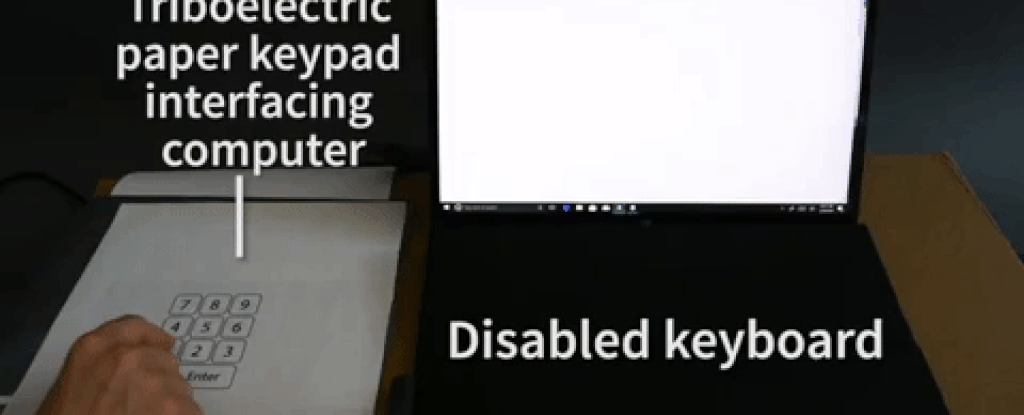Products You May Like
Scientists have unveiled a new printing process that can turn just about any piece of paper or cardboard into a waterproof keyboard that you can fold up and put in your pocket – and it doesn’t require a power source.
The tech makes use of a special coating that’s repellent to liquids and dust, which allows multiple circuit layers to then be printed on top of the paper without any smudging or degradation between the layers.
On the other side of the paper or cardboard, standard ink printing can then be used to point out where the pressure points (the buttons) are, and what they represent. These layers can be printed in any design you want, from numerical keypads to volume controls.
[embedded content]
What’s more, no batteries or power plugs are required to operate the finished keyboard. It’s known as a triboelectric nanogenerator or TENG device, capable of being fully powered from the touch of the operator and the mechanical energy that’s produced.
“This is the first time a self-powered paper-based electronic device is demonstrated,” says biomedical engineer Ramses Martinez, from Purdue University.
“We developed a method to render paper repellent to water, oil and dust by coating it with highly fluorinated molecules. This omniphobic coating allows us to print multiple layers of circuits onto paper without getting the ink to smear from one layer to the next one.”
When the printed parts of the paper get pressed, they’re able to transmit signals over Bluetooth to another device – a laptop, for example. You’ve then got a lightweight, foldable keyboard that can be taken anywhere and easily wiped clean when needed.
[embedded content]
The technology ticks plenty of boxes: it scales up well using existing production processes, it’s good for the environment (the paper can be simply recycled again), and it’s flexible – as well as being water-resistant and completely customisable.
These paper devices are cheap to produce as well – less than US$0.25 each, according to the researchers. Potential uses include smart packaging, or where temporary input devices are required.
You can see paper being used a volume control in the video below.
[embedded content]
“I envision this technology to facilitate the user interaction with food packaging, to verify if the food is safe to be consumed, or enabling users to sign the package that arrives at home by dragging their finger over the box to properly identify themselves as the owner of the package,” says Martinez.
“Additionally, our group demonstrated that simple paper sheets from a notebook can be transformed into music player interfaces for users to choose songs, play them and change their volume.”
The research has been published in Nano Energy.
